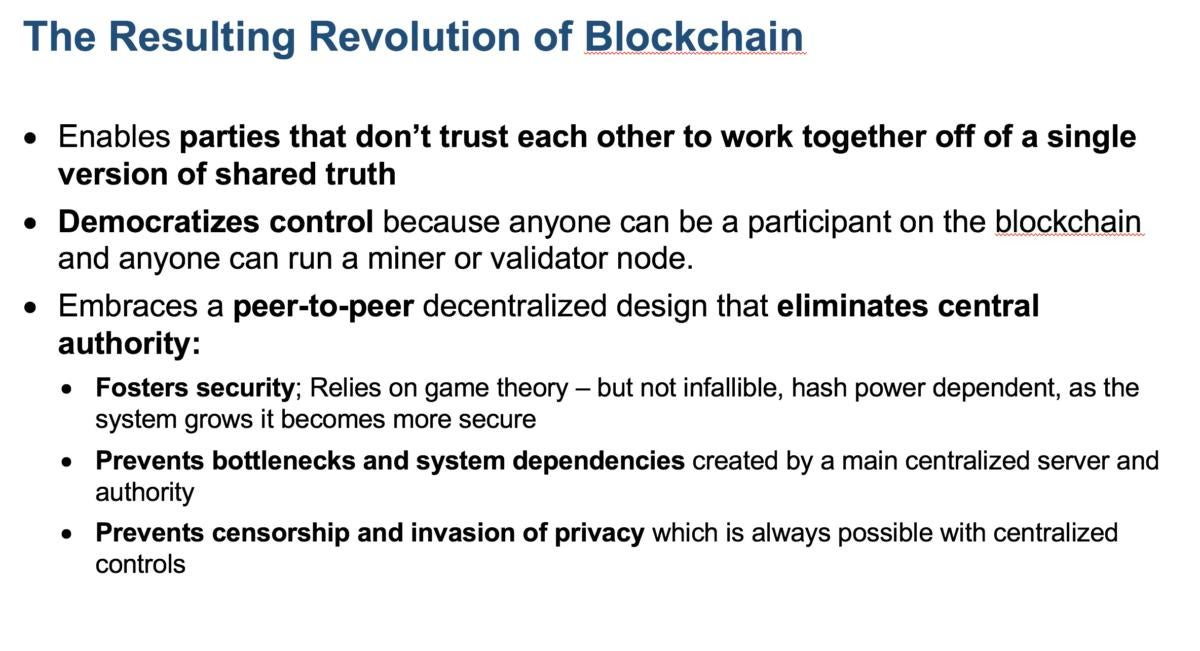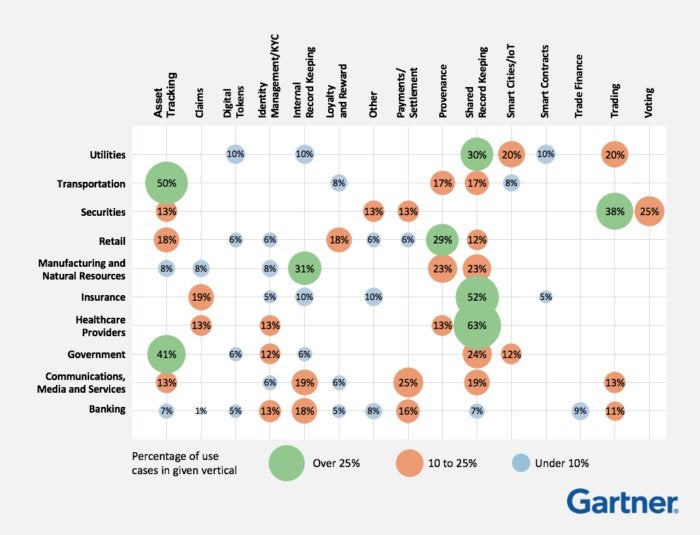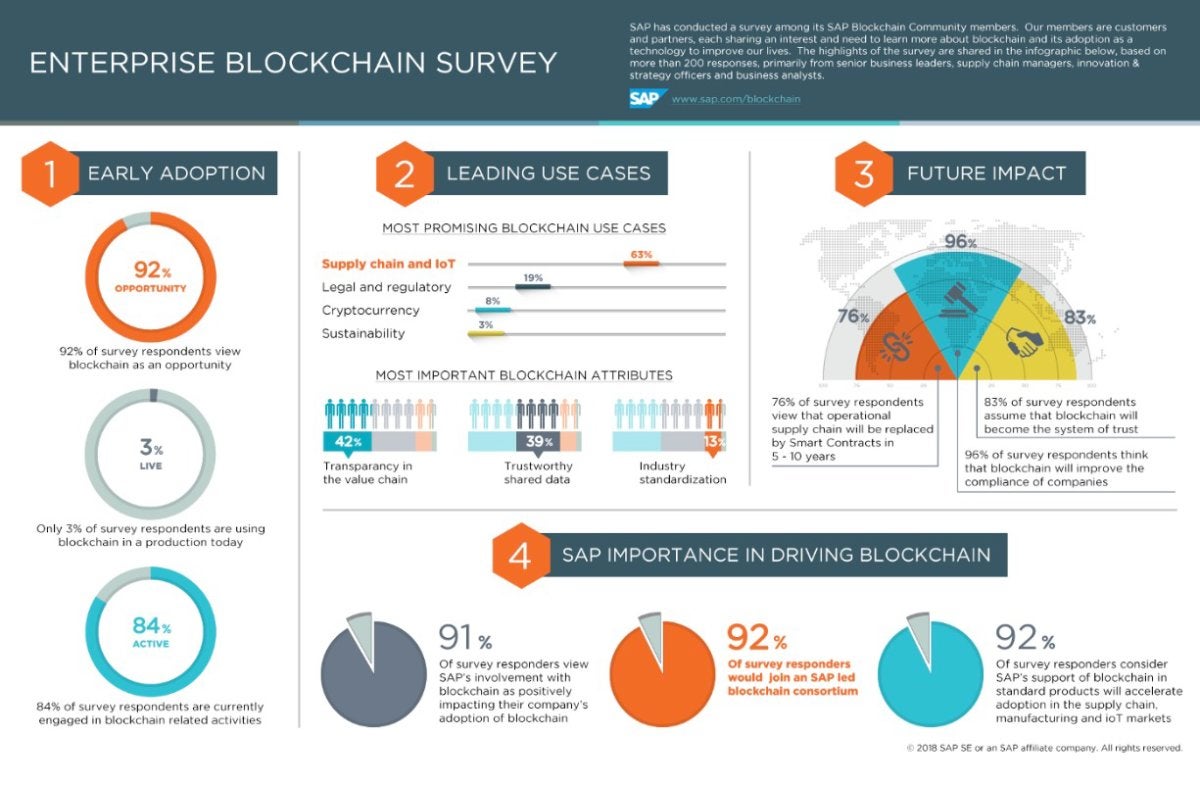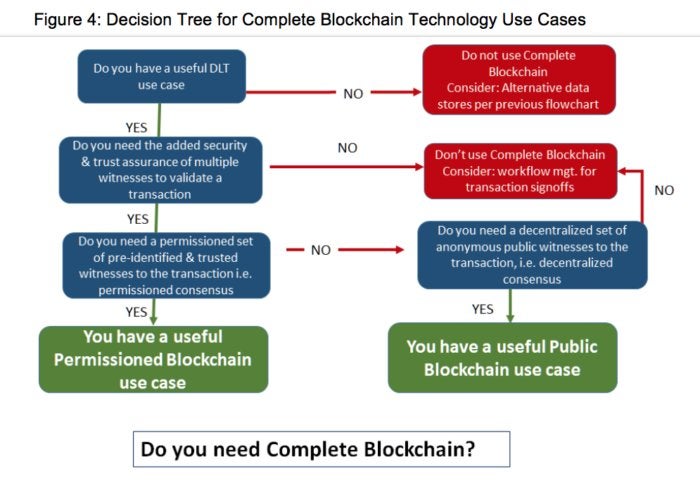advertisement
CIOs, you’re doing blockchain wrong
IT leaders who’ve taken the plunge into blockchain are mainly deploying it in proofs-of-concept tests to address the same problems…

IT leaders who’ve taken the plunge into blockchain are mainly deploying it in proofs-of-concept tests to address the same problems a conventional database could handle, according to research firm Gartner.
Relying on a survey of consulting firms whose clients had deployed some form of blockchain, Gartner found that CIOs are using blockchain for shared record keeping and asset tracking. They’re not using it as a decentralized ledger able to support immutable data audit trails for exchanging a single version of transactional truth – the core mission at the heart of blockchain.
For many, blockchain remains a technology in search of a problem, Gartner said in a research note.
advertisement
“That no one is using those innovative features calls into question why they’re using blockchain. Just go use a database,” said Avivah Litan, a Gartner vice president and distinguished analyst. “But, the reason they’re using blockchain is for the distributed ledger technology.”
The perception that the technology is not meeting business expectations has resulted in a palpable disillusionment among IT leaders because of the misalignment of blockchain expectations with the real-world requirements of enterprise projects. The problem also stems from a simple fact: blockchain is not yet mature enough for all enterprise use cases.
 GARTNER
GARTNERBlockchain, which is built on peer-to-peer, decentralized ledger technology (DLT), features decentralized consensus, the elimination of central authorities, tokenization or digital assets, data confidentiality, scalability, manageability, data security and privacy. Additionally, blockchain enables the use of smart contracts or business automation tools.
advertisement
One of blockchain’s main attributes is its ability to create a decentralized consensus among users, where the more computers or users there are on the P2P network, the more secure it is from attacks; that’s because the more nodes it takes to achieve a consensus (or agreement) on a transaction, the less chance there is for someone to gain control of the majority of nodes and game the system.
Defeating the purpose of blockchain
While decentralized consensus and tokenization are not required for shared audit trails of immutable data in DLT, they are important components for minimizing the need for verification or trust of those using it for business purposes, according to Litan.
In a permissioned or private blockchain — the most typical applied for business use — there is no decentralized consensus mechanism; in fact, there are limited nodes, typically the DLT administrator and the pre-authorized user or users on the network.
advertisement
“In 60% of the use cases we see through the survey…you don’t see uses of decentralized consensus,” Litan said. “They’re all permissioned blockchains and have a set of rules on who can join and who can add data. In some sense, it defeats the purpose of blockchain.”
A permissioned blockchain, Litan explained, essentially avoids DLT’s primary innovation – trustless consensus where every node has a current copy of the ledger and every node has a verifiable, cryptographic signature confirming their authenticity; there is no central authority governing a public blockchain.
Several companies have floated the idea of a public, or open blockchain for business use, including Devvio and Ernst & Young, which created a public blockchain prototype it plans to launch this year. The public blockchain for business will allow companies to transact with any number of partners in an open network while protecting the privacy of each participant and their data by encrypting it.
 GARTNER
GARTNEROn the other hand, some permissioned blockchain use cases do leverage its decentralized consensus structure and its immutable data audit trails.
“There are some cool use cases that really do use the consensus portion and tokenization of blockchain,” Litan said. “They’re still not using the thousands of nodes [in a public blockchain], but they could grow into that for things like the trading of carbon credits and consumers selling energy to each other through a utility-managed exchange. Those seem like the most promising use cases.”
What NHA Human Resources designed
For example, NGA Human Resources adopted a permissioned or private blockchain to secure sensitive payroll data and to address audit concerns about using a single version of the database that is shared internally and with clients (and eventually clients’ employees), according to a research note from Litan.
NGA’s blockchain vendor, Gospel Technology, provides APIs that interface directly with NGA’s clients’ payroll systems, eliminating the need for less secure FTP file transfers, Litan said.
NGA had been using the file transfer protocol (FTP) for managing payroll accounts for clients, a setup that had security vulnerabilities; mainly, it didn’t provide for encrypted data. NGA also has internal audit and compliance obligations to ensure their services run properly, along with external compliance obligations because any of their clients can audit their services once a year using an auditor of their choice, according to Litan.
Once client transactions are imported into the Gospel platform, key transactions are encrypted and stored as immutable data on the blockchain.
 SAP
SAPHow to know if you need blockchain
In 2019, IT leaders who are trying to embrace blockchain face a confusing array of technology questions as they try to understand how it works, why they need it and what value it offers over legacy database or other technologies. They also must figure out which use cases are most appropriate.
“Otherwise you end up thinking, what do I need this for?” Litan said.
CIOs and other IT leaders also need to understand how to integrate blockchain into existing legacy systems, which today mainly consists of a set of APIs and data sharing standards.
Because it was overhyped by vendors and technology industry pundits for so long as a silver bullet for B2B problems, blockchain recently joined other technologies such as virtual assistants, deep learning and IoT platforms in Gartner’s “Trough of Disillusionment.”
 GARTNER
GARTNERGartner gauges the maturation of new technology through a “Hype Cycle,” a graphic-based lifecycle that follows five phases: from the Technology Trigger, when proof-of-concept stories and media interest emerges, to the Plateau of Productivity, when mainstream adoption occurs – if the technology turns out to be more than a niche solution.
Among those five Hype Cycles is the Trough of Disillusionment, when interest wanes as pilots and proofs-of-concept fail to deliver and technology providers either work out the kinks and improve the technology to the satisfaction of users, or ultimately fail and die out.
In a blog post, Litan listed eight hurdles blockchain needs to surmount if it is to advance and meet the goals hawked by technology providers selling it as a cure-all for virtually any international, transactional network need – from fee-less, cross-border payments to supply chain tracking.
Blockchain is in its winter, according to Gartner. Even so, IT leaders need to prepare for “the inevitable blockchain spring that will emerge once the core-enabling technologies and use cases evolve and mature, resulting in significant benefits for the enterprise,” Gartner noted.
One of blockchain’s greatest attributes over traditional databases is its ability to solve the “Two Generals Problem,” where a message can be trusted even though it is being transmitted over an open network. Blockchain achieves that through the use of cryptographically verifiable signatures.
“Until the introduction of this key blockchain innovation, this problem had not been computationally solved – so a relational database does not solve that problem,” Litan said.
Even as IT leaders grow skeptical of blockchain’s ability to solve business problems, it remains the most-searched term on Gartner’s research portal, “as organizations seek to understand how this technology will impact their business processes in the future.
Gartner predicts that by 2023, blockchain will support the global movement and tracking of $2 trillion of goods and services annually. And blockchain has made in-roads in the FinTech industry, where it’s being used as a method for cross-border financial transactions.
In order for CIOs and IT managers to determine whether blockchain can solve business problems, Litan said they must first determine whether they really need the technology.
 GARTNER
GARTNER“If you need distributed ledger technology, then go ask yourself if you need these witnesses to the transactions to add security, and that just means do you need consensus, either permissioned or decentralized,” Litan said. “If you need that, then you have a blockchain.
“Then you ask yourself separately if you need smart contracts or tokens,” she added. “The first thing, the basic building block, is DLT.”